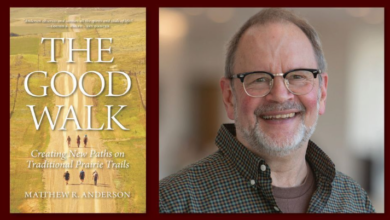
Play Should Be For EVERYBODY
The 2020 ParticipACTION report card revealed significant and ongoing gaps in physical activity amongst Canadian children and youth.
Less than half of children ages 5-17 are meeting the recommendations for daily physical activity, and only one in five children are engaging in 1.5 or more hours of active play day (ParticipACTION, 2020). Of greatest concern are the gaps in activity for girls, gender diverse children and children who experience disability. Without access to inclusive movement opportunities, these children are missing out on the positive outcomes associated with physical activity, including improved academic performance, increased self-esteem and self-efficacy, flourishing mental health and more (ParticipACTION, 2020). Beyond physical activity levels, we also recognize the ways in which discrimination and barriers to access can negatively impact other aspects of well-being, including social and emotional well-being.
I truly believe that everyone deserves access to health and well-being. Everyone deserves to have opportunities and resources to tend to all dimensions of their well-being. Research has shown us that play is for everybody, because we know that play has an integral role in healthy child development and healthy futures. There are key values for creating equitable, inclusive, and accessible physical activity opportunities. These key attitudes and values are consolidated in something called the Play is for EVERYBODY framework. Play is for EVERYBODY when it is:
Equity-seeking
The goal is to ensure that everyone has access to well-being, and we have to be intentional about our environment if we want that to happen. Equity is not one-size-fits all. It requires flexibility and different entry points, supports, and resources to ensure that everybody gets what they need to support their well-being.
Valuing diversity
Every child has behaviors, beliefs and characteristics that make them unique. Their value systems, languages, religious beliefs, and ways of life also contribute to their self-identity. By valuing each student’s identity, culture, interests and strengths, we can positively contribute to their self-concept and build them up as individuals. Give participants opportunities to share their feelings, beliefs, values and perspectives, and teach them how to receive and embrace this information while honoring the differences of their peers.
Emphasizing participation
Ensure that you emphasize participation and acceptance before skill and effort. Don’t fear competition; rather, create an environment where offering levels of competition are welcomed and appreciated. In order to increase movement and decrease sedentary time, we also need to eliminate elimination games.
Removing barriers and challenging biases
Barriers exist at individual, interpersonal and organizational levels. Create an environment where all bodies are valued as good bodies, and encourage participants to embrace the different ways that they move in the world. Addressing our own biases is also important. Bias is a way of understanding the many assumptions that have settled into our brains. The more these assumptions are reinforced or go unaddressed, the more those brain pathways become easier to travel. We have to work to identify and challenge our unconscious biases to reduce harm and increase experiences of belonging.
Youth-led
Leadership comes in many different forms, but all youth play an important role in supporting quality programs and in providing examples for younger participants. It is important to engage youth as leaders in school- and community-based programs!
Building belonging
Belonging is essential when it comes to creating a welcoming and inclusive environment. Prioritize relationships over tasks and ensure that all participants have access to caring adults or leaders and the opportunity to make friends.
Offering choices
Offer choices in individual and group, cooperative and competitive, and high and low intensity activities, with equipment, time, rules and more! Choice is empowering for participants and by giving opportunities to practice choosing how they move, we can ensure they feel competent and confident to do so throughout their lives.
Designed for accessibility
Accessibility takes shape through intentionality about our environments, attitudes, communication, equipment and the games and activities we choose. Accessibility means that all participants have access to the benefits of our programming. To create inclusive environments, ensure that all participants are welcomed and valued, are able to fully participate, can experience reciprocal social relationships and are presumed competent and able to engage in ways that feel best for them.
Yours for life!
Find ways to move and play that feel best for you – this will allow you to role model diverse ways of moving and playing with your participants. Consider age-appropriateness and remember that play looks different access ages and life stages.








































